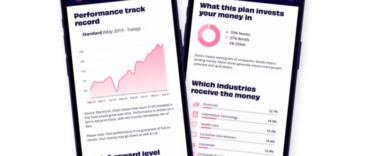Latest pension changes explained
Here are the edited highlights of the latest pension changes announced last week.
It’s pretty heavy reading but there isn’t a lot out there on the internet actually explaining how the changes will affect people, so I thought it was worth publishing.
Firstly, the changes to tax relief in the previously announced draft legislation have been included in the Finance Bill unchanged.
I’ve split the rest of the changes into two sections based on relevancy i.e. ‘for everyone’ and ‘for the wealthy’. But to sum up – for the majority of people the changes simply mean that they will have more flexibility when it comes to retiring – and that’s about it. It is the extremely wealthy who have paid huge sums into pensions and now have pots worth over £1million who need to be sweating about the changes to the pension rules.
For everyone
Deferring pension benefits beyond age 75
- The Government has ended the effective obligation to purchase an annuity at age 75. Individuals with money purchase pension funds who have yet to take benefits will now be able to defer the decision indefinitely.
- Currently no lump sums may be paid once the member has reached age 75. These rules will also be removed.
Existing income drawdown rules are to be replaced with effect from 6 April 2011 by new rules governing Capped Income and Flexible Income.
Capped Drawdown
This replaces both the existing rules for Unsecured and Alternatively Secured Pensions (USP and ASP). Individuals will be able to determine their level of retirement income subject to a capped limit. This option will also replace ASP for existing investors. The maximum amount of income that can be drawn will be 100% of a comparable annuity. The comparable annuity must be reviewed after specified time periods.
Transition to Capped Drawdown
The Capped Drawdown rules will apply for those who have Unsecured Pension as at 5 April 2011 from the earlier of:
- The end of the current five year review period.
- The first scheme income year anniversary following the 75th birthday, or if already aged 75 from the first anniversary after 5 April 2011.
- The first scheme income year anniversary following transfer to a new drawdown provider.
- The rules also apply for those who entered ASP before 22 July 2010 from the start of the annual drawdown period in which 6 April 2011 falls. This means those currently in ASP can stop taking income if the next anniversary of entering ASP falls on or after 6 April 2011.
Flexible Drawdown
From 6 April 2011 individuals over the age of 55 that meet the Minimum Income Requirement (MIR) of at least £20,000 per annum will be able to drawdown an unlimited amount out of their crystallised pension funds. The amount drawn will be treated as income for tax purposes.
To enter Flexible Drawdown individuals will self certify that they meet the MIR. Having entered Flexible Drawdown there will be no restrictions on the income the individual can draw. Capped Drawdown rules will cease to apply.
- The income included for satisfying the MIR must be guaranteed and payable for life. The income that will count towards the MIR includes the basic state pension, additional state pension, level annuity income and Scheme Pensions. Purchased life annuities, other state benefits and drawdown income do not count towards the MIR.
- To be eligible for flexible income the individual must have ceased to be an active member of any defined benefit scheme before an election can be made.
- Any contributions to a money purchase scheme made in the same tax year as the election for Flexible Drawdown will be subject to an Annual Allowance charge and therefore taxed at the individual’s highest marginal rate.
- The current MIR is set at £20,000 and is reviewable every five years by Treasury Order. Individuals who become temporarily resident abroad will be taxed on all withdrawals of Flexible Drawdown Pension if they return to the UK within a five-year period.
For the wealthy
Protection from the Lifetime Allowance Charge
- The Government announced on 14 October 2010 that the Lifetime Allowance from 6 April 2012 would reduce from £1.8 million to £1.5 million.
- Individuals who registered at A-Day for Primary and /or Enhanced Protection are not affected by the change.
- Individuals who had continued to build pension rights in the expectation of a Lifetime Allowance of at least £1.8 million who could be significantly affected by the reduction in the Lifetime Allowance.
- They have now announced that individuals who are not registered for Primary or Enhanced Protection will be able to apply for what is known as fixed protection. The value of an individual’s benefits up to £1.8 million is protected. Any excess value above £1.8 million will still be subject to a Lifetime Allowance tax charge of currently 55%.
(source: technical notes produced by Skandia)






